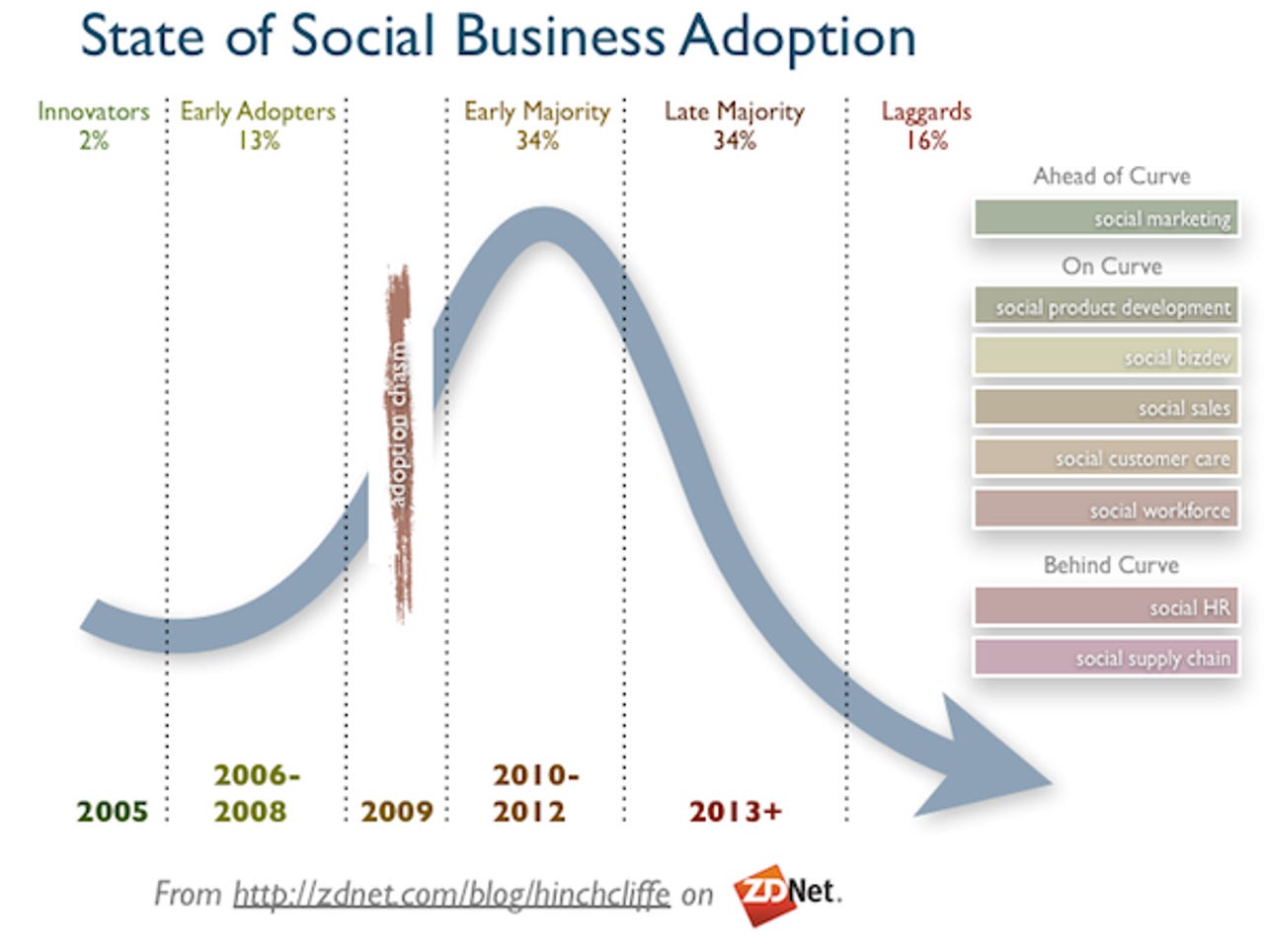The leading indicators of social business maturity in 2012

So, it's about seven years after social media first began to be used for business purposes. It's been a long journey for some and shorter, more intense journey for others. What have we learned so far? What is the state of the industry? Is social media truly a more effective way of working? What methods are succeeding and where is the value? These are some of the questions that have been asked over the years, but we've often not had good answers.
As I look back, it's clear that we've now have more and better data points captured this year than ever before. There's little doubt now about the big picture: Social media is now being used in en masse for marketing, sales, operations, customer care, supply chain, and amongst our workforces. Yet the while the benefits are clearly uneven -- some companies are achieving truly stand-out ROI while others only see minor incremental value -- the trend is literally all in one direction: Social media adoption is growing steadily and is now used in the majority of organizations today in some capacity.
Last year, I benchmarked all the availabile data on social media adoption vs. social business, and it was obvious that businesses were about 2-4 years behind the rest of the world in adoption. The leading edge of this graph has not changed much this year, but the lagging end seems to have. A wealth of studies have emerged this year to show that social media not only has a firm footing in most organizations, but has become top of mind for C-level executives.
Related: Is it time for a C-level social media executive?

As expected, some business functions are ahead of the curve when it comes to adopting social media. Marketing has long been an early user in particular, but social workforce (aka Enterprise 2.0), Social CRM, and social product development have proceeded well. Others are decided behind the curve, even though there are strong examples in each case. These include social HR and social supply chain.
Related: Enterprise 2.0 a bright spot for software in 2012
Social Business Maturity Stats for 2012
So, what does this year's social business maturity data look like? Below is a summary with links to the details of the findings themselves:
- Two-thirds of businesses are now using social technology for marketing and related functions. 37% expect social media to be used regularly across their entire business. 9% expect it to be fully integrated. -- AIIM Report 2012.
- 79% of companies use, or are imminently planning to use, social media. Neary half of the companies who were rated as 'effective' in social media said it was integral to their firms' strategy. -- Harvard Business Review Analytics Services.
- 59% of companies use social media to engage with customers, 49% to advertise, and 35% to research customers. 30% use social media to research competitors and new products. Half, however, collect no data from social media. -- Stanford Business 2012 Social Media Survey.
- 46% of companies globally planned to increase their investment in social media this year. However, only 22% of middle managers felt prepared to properly incorporate social media into their work. -- IBM 2012 Social Business Study.
- 52% of executives say that social business is important to their companies today. 86% says it will be vital in three years. 28% of CEOs say social business is vital to their organizations, about twice the rate of CFOs and CIOs. -- MIT Sloan Management Review 2012 Social Business Global Executive Study.
- 71% of companies today say they provide customer support via social media. 18% handle over a quarter of all customer care this way. -- SAP and Social Media Today Report.
- Social workforce projects generally engaged less than half of their workforce, and 96% of external and internal social efforts were not connected, despite evidence of high ROI there. -- Social Business Council 2012 Engagement Study.
- 27% of companies now have someone dedicated to social media in their company. Those that have dedicated departments, 83% are staffed with 3 or fewer people. -- Ragan Communications and NASDAQ OMX Survey.
- Update: Nielsen's extensive new Social Media Report 2012 was just released. It reports that 47% of users employ social media to get customer service. One in three prefer it.
A few things stand out from this list. One is that more formal work than ever is taking place at highly respected organizations to understand the usage and efficacy of social media to businesses. This includes leading universities and think tanks including Stanford, Harvard, MIT, and many others. This will help decision makers and business strategists have the clearest view yet on what works and how to most effectively transition to becoming a social business.
The second is that organizations are clearly in the very midst of this transition. Most have sprinkled social media around the edges, experimented, and have begun the journey. Only the late majority and the technology laggards are left at this point (see visual above.) If you haven't started by now, you are in a distinct minority for the first time since social media arrived on the scene.
The final point is that the statistics above -- and I'm fully aware that they are largely self-reported figures that should be taken with a grain of salt, though they paint a compelling picture in the aggregate -- are just the tip of the iceberg when it comes to the data available for organizations to make decisions on where to invest with social media and if they are above par, on par, or below par when it comes to applying what has become one of the greatest communication revolutions in history to their business.
To go more fully into this data, I'll be posting a gallery here shortly. In the meantime, please post your favorite statistics on social business from 2012 in comments below.